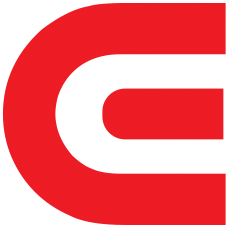From earlier in the year:

 www.thelec.net
www.thelec.net
When will Samsung adopt EUV pellicles in chip production like TSMC?
Extreme ultraviolet (EUV) process adoption by chipmakers in their advanced chip-making is expanding rapidly in recent years.
In response to this increasing demand, many companies are developing pellicles for use in the EUV process. South Korean companies S&S Tech and FST have developed those with over 90% transmittance already.
However, Samsung is yet to adopt them and sources say this could be fear of the pellicles being vulnerable to damages that could halt the entire production line when it occurs.
Pellicles are commodities used to protect the photomask during the lithography process.
They are expensive but adopting them can allow chipmakers to use the even more expensive photomasks, which are around 500 million won to 1 billion won per unit, to be used longer, which ultimately results in overall cost reduction.
Samsung made equity investments in S&S Tech and FST in 2020 and 2021, respectively, for this reason. It spend 65.8 billion won for 8% shares in S&S Tech and 43 billion won for 6.9% shares in FST.
This support allowed the two companies to develop seemingly commercially viable pellicles within two years.
But sources said Samsung yet lukewarm in adopting these to its fabs. The main reason is the potential of the pellicles being damaged.
EUV process is a high-energy output process and could cause the pellicles to break.
If this occurs, the EUV machine, which costs millions of dollars, must be stopped to be cleaned, while the entire production that relies on the machine is also halted.
Samsung can only mitigate this risk by actually testing the pellicles on its EUV process.
There may be short-term losses from these tests but in the long-term, it is hard to deny that EUV will contribute to increasing the chipmaker’s overall productivity.
Taiwan’s TSMC is said to have gone through a similar experience but has now succeeded in adopting pellicles in its EUV process.
The company procures its pellicles from Japan’s Mitsui Chemicals (Fred's note: i.e. ASML). When first adopting these pellicles, they would occasionally break, causing TSMC to shut down the production line multiple times. Through these experiences, the Taiwanese chip giant accumulated a guideline to handle such situations.
The current chip downturn also offers Samsung such an opportunity; the production outputs of lines are at all-time low, making such tests more economically viable.
저작권자 © THE ELEC, Korea Electronics Industry Media 무단전재 및 재배포 금지

When will Samsung adopt EUV pellicles in chip production like TSMC?
Extreme ultraviolet (EUV) process adoption by chipmakers in their advanced chip-making is expanding rapidly in recent years.In response to this increasing demand, many companies are developing pellicles for use in the EUV process. South Korean companies S&S Tech and FST have developed those with ove
When will Samsung adopt EUV pellicles in chip production like TSMC?
- Noh Tae Min 기자
- 승인 2023.04.10 08:59
Extreme ultraviolet (EUV) process adoption by chipmakers in their advanced chip-making is expanding rapidly in recent years.
In response to this increasing demand, many companies are developing pellicles for use in the EUV process. South Korean companies S&S Tech and FST have developed those with over 90% transmittance already.
However, Samsung is yet to adopt them and sources say this could be fear of the pellicles being vulnerable to damages that could halt the entire production line when it occurs.
Pellicles are commodities used to protect the photomask during the lithography process.
They are expensive but adopting them can allow chipmakers to use the even more expensive photomasks, which are around 500 million won to 1 billion won per unit, to be used longer, which ultimately results in overall cost reduction.
Samsung made equity investments in S&S Tech and FST in 2020 and 2021, respectively, for this reason. It spend 65.8 billion won for 8% shares in S&S Tech and 43 billion won for 6.9% shares in FST.
This support allowed the two companies to develop seemingly commercially viable pellicles within two years.
But sources said Samsung yet lukewarm in adopting these to its fabs. The main reason is the potential of the pellicles being damaged.
EUV process is a high-energy output process and could cause the pellicles to break.
If this occurs, the EUV machine, which costs millions of dollars, must be stopped to be cleaned, while the entire production that relies on the machine is also halted.
Samsung can only mitigate this risk by actually testing the pellicles on its EUV process.
There may be short-term losses from these tests but in the long-term, it is hard to deny that EUV will contribute to increasing the chipmaker’s overall productivity.
Taiwan’s TSMC is said to have gone through a similar experience but has now succeeded in adopting pellicles in its EUV process.
The company procures its pellicles from Japan’s Mitsui Chemicals (Fred's note: i.e. ASML). When first adopting these pellicles, they would occasionally break, causing TSMC to shut down the production line multiple times. Through these experiences, the Taiwanese chip giant accumulated a guideline to handle such situations.
The current chip downturn also offers Samsung such an opportunity; the production outputs of lines are at all-time low, making such tests more economically viable.
저작권자 © THE ELEC, Korea Electronics Industry Media 무단전재 및 재배포 금지
